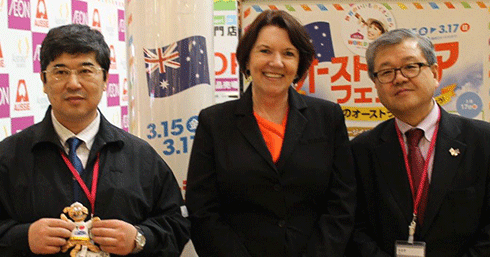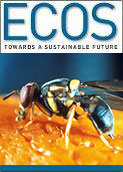
|
Published: 26 November 2013
Why the world loves Aussie 'tigers' and 'bananas'
On World Fisheries Day last Thursday, Australia’s Northern Prawn Fishery (NPF) had cause to celebrate its first year of sustainability certification, and a successful year-one audit by the Marine Stewardship Council (MSC).
The certified prawns have already sweetened Australia’s long-term export partnerships. Japanese retail giant Aeon launched its ‘Australian Food Fair’ at Koshigaya City this year with piles of orange-striped, MSC-certified tigers and a VIP address by NPF Industry P/L chief executive, Annie Jarrett.
The prawns are also being sought by domestic retailers whose customers have become more discerning about the source of their seafood.
The MSC is a non-profit organisation that sets rigorous, internationally recognised standards for sustainable fishing and seafood traceability. Products from fisheries carrying a blue MSC ‘ecolabel’ can be identified by the market as having been sourced sustainably.
However, while sustainability means marketability in some nations, for most of the world, food security is the paramount need.
In 2009, fisheries and aquaculture provided 6.5 per cent of humanity’s protein, and supported the livelihoods of some 700 million people. But the global marine catch is declining, and the United Nations Food and Agriculture Organisation (FAO) says better management is needed to make fisheries sustainable.
Fortunately, Australia’s fisheries are in relatively good shape.
In fact, the FAO has recognised the Northern Prawn Fishery (or NPF) as a global model of fisheries management, thanks to a 50-year partnership between science, industry and management.
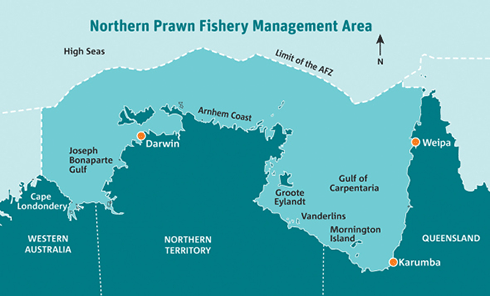
|
|
The Northern Prawn Fishery Management area. Credit:
CSIRO
|
Today, the NPF is one of Australia’s most valuable Commonwealth-managed fisheries. It targets nine commercial species of prawns, including white banana (Penaeus merguiensis), red-legged banana (F. indicus), brown tiger (Penaeus esculentus), grooved tiger (P. semisulcatus), blue endeavour (Metapenaeus endeavouri), and red endeavour (M. ensis). Scampi, squid, scallops and bugs are also taken.
50 years ago...
The NPF’s origins date back to 1963, when the CSIRO began a two-year survey in the south eastern Gulf of Carpentaria, backed by government and industry.
Scientists set up a field station in the remote, one-pub town of Karumba, chartered a 14.6m wooden trawler, Rama, and consulted Admiralty charts based on depth soundings taken by Matthew Flinders in 1802–03.
Initially they encountered more cyclones, crocodile hunters and pirates than prawns, but nearly a year into the survey, their persistence was rewarded with the first big haul of banana prawns.
After 20 years, the fishery had 302 licences, but catches were volatile and had begun to decline. Fortunately, research efforts in the gulf had also gathered steam: navigational and tidal charts were updated, and the scientists had begun a comprehensive study of the ecology of the prawns.
From boats and float planes, they observed the prawns’ egg production, larval dispersal and seagrass and mangrove ‘nursery’ grounds (while devising ways of not getting stuck in the prawn-friendly mud banks of the Norman River); they tagged 20,000 prawns near Groote Eylandt to track their habitats, growth and migration; they peered at plankton down microscopes; and they identified links between prawn populations and rain.
They learned enough to estimate average sustainable yields, and advise the industry on fleet reduction and fishing restrictions to protect young and breeding prawns.
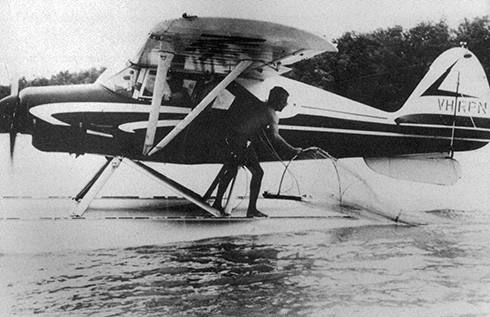
|
|
Early days: In the 1960s, CSIRO researchers carried out field work from an old 14.6 m wooden trawler and float planes. Credit:
CSIRO
|
Every year is different
Stock-taking (or stock assessment) is a perpetual challenge for any marine fishery where the stocks are wild, remote, and always on the move.
It’s particularly tough in the NPF, which has several species of fast-growing, short-lived animals. What scientists learn about the stock one year may bear little relation to the next.
Yet more precise stock assessments can foster more effective use of the fishery resource. CSIRO stock assessments in the 1990s and 2000s were judged robust enough to steer further fleet reductions in the NPF, which now numbers only 52 vessels, to help rebuild overfished tiger prawn stocks.
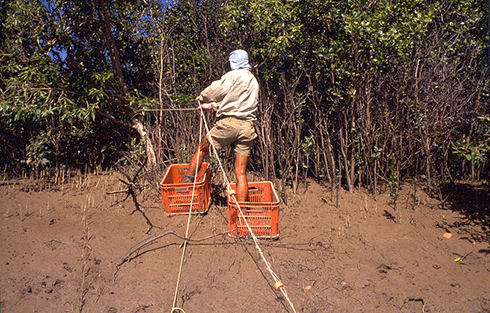
|
|
Over the years, scientists have come up with some resourceful ways of working in the muddy banks of the gulf’s tropical rivers. Credit:
CSIRO
|
Populations of banana prawns, on the other hand, were so variable they defied normal stock assessment methods. Annual catches can vary between less than 2000, to more than 12,000 tonnes, depending on rainfall runoff from land and the strength of the annual wet season.
In recent years, researchers have improved prediction reliability by linking annual stock predictions with rainfall figures up to the end of February.
‘Bioeconomic’ model
As prawn stocks began rebuilding, the next step was to address the fishery’s economic viability.
CSIRO worked with the Australian Bureau of Agricultural and Resource Economics and the Australian National University to develop a ‘bioeconomic’ model to simulate the fishery – from prawn life cycles and fishing dynamics, to fuel prices and exchange rates – which would help scientists, industry and managers test and develop management procedures.
The modelling has enabled the fishery to catch larger, more valuable prawns.
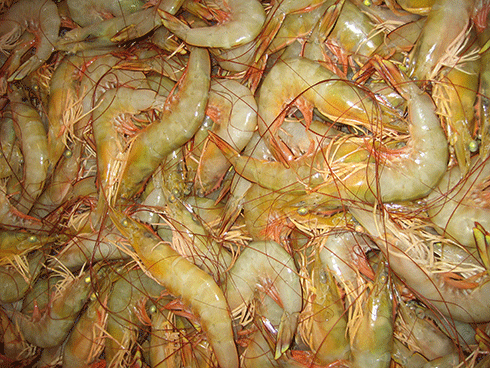
|
|
Banana prawns from the gulf: bioeconomic modelling has enabled the fishery to sustainably target larger prawns. Credit:
CSIRO
|
Today, profits are up, and the fishery is on track to achieve ‘maximum economic yield’: the point at which the fleet generates maximum returns, with fishing effort kept relatively low and prawn stocks kept relatively high.
The fishery is also buffered against fluctuations in profits caused by changes in stocks, prawn prices, fuel costs and environmental extremes.
Few fisheries worldwide have the capacity to operate at this level.
Ecological risk assessment
The NPF embraces ecosystem-based management, an approach that seeks to ensure sustainability of the ecosystem as well as the commercial species.
Two annual surveys, funded by the NPF and led by CSIRO, are now carried out to map prawn availability ahead of each fishing season. The survey results guide management decisions such as whether to send the fleet home if catches fall below levels that are profitable to fish.
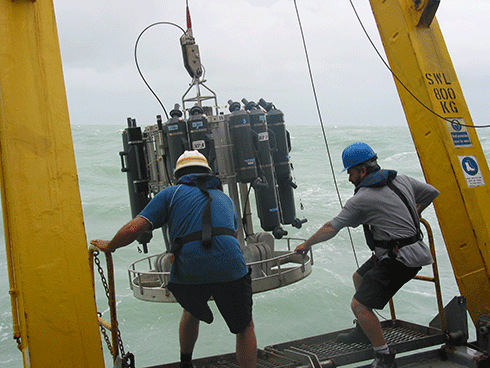
|
|
Research is key: the willingness of the NPF to embrace scientific advice and invest in sustainable operations has earned it a degree of self-management. Credit:
CSIRO
|
A range of other measures ensure the fishery’s accreditation under Australian biological diversity and wildlife trade legislation, including a method of ecological risk assessment developed by CSIRO.
During the past decade or so, the NPF has also tried to exclude marine turtles and other by-catch species from trawl nets through the use of by-catch reduction devices (for example, species-specific ‘escape hatches’ in nets), developed through joint research.
The willingness of the NPF to embrace scientific advice and invest in sustainable operations has earned this fishery a degree of self-management. This collaboration – with the Australian Fisheries Management Authority and CSIRO – now manifests in shared responsibility for the data collection, environmental monitoring, and operational adjustments that underpin the fishery’s sustainability.
So there is much for the NPF and prawn lovers to celebrate at the moment, as the trawlers return to ports in Darwin and Cairns in coming weeks, after another successful season.


